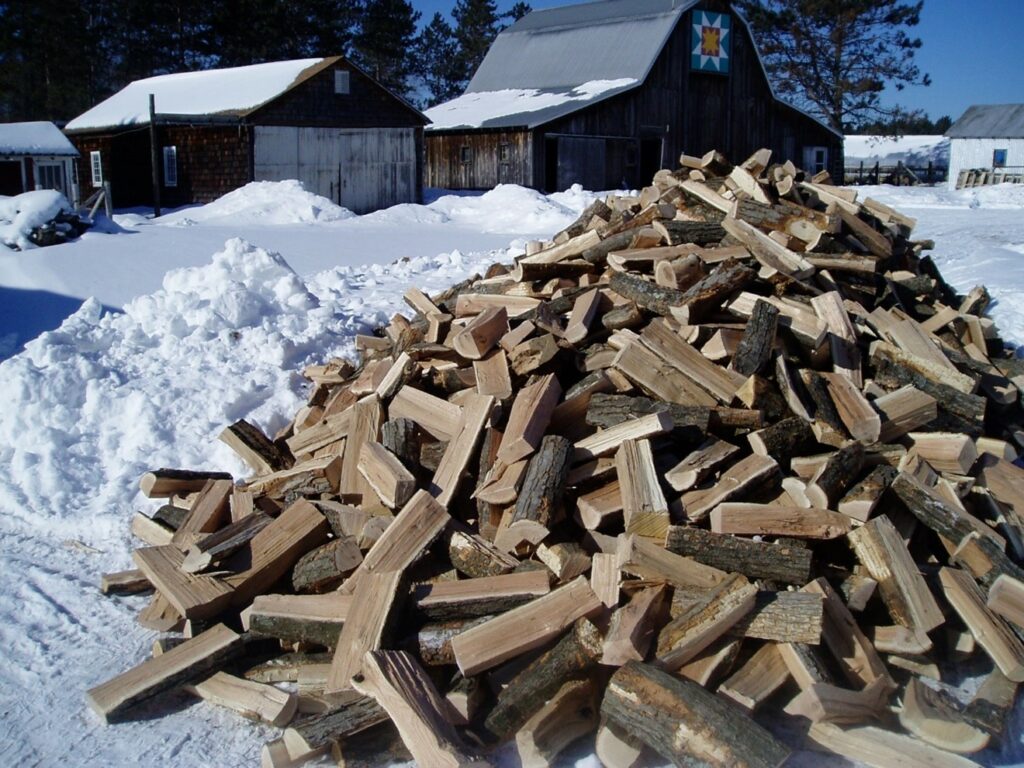1000 Pizzas of Wood

It may still be sub-zero temperatures on the farm, with piles of snow and frozen water buckets, but we’re already thinking of summer. This includes planning events like booking musicians for the Summer Music Series, organizing artists and creatives for our annual summer showcase (this year with a festive fiber theme), and dreaming towards new initiatives like Wednesday afternoon arts and crafts classes.
But planning summer means working on readiness for all the yummy foods to come as well. In the aquaponics greenhouse, we’re cleaning out and revitalizing beds for early tomatoes, fresh herbs, and crunchy salad additions. Back inside, we’re finalizing our seed order for summer’s bountiful garden. And in the dairy, Kara is busy making cheeses that will appear on sandwiches, salads, and of course our wood-fired pizzas.
Each season, the wood-fired pizzas with Kara’s ancient grains crust, sheep milk cheeses, and ingredients right from the farm draw a greater crowd. 500 baked and served one year, 800 the next, and then last year we made 1000 pizzas!
What does 1000 Farmstead pizzas look like? Well, we had a taste of what the preparations look like last night when 2 and 2/3 cords of cut and split red and white oak were delivered from Ashland. We used to keep up with those wood needs ourselves, but with 24 pizza nights planned for summer Thursdays and Saturdays, it was time for a little help making it happen.
When we first came up to the farm in 2000, we primarily kept ourselves warm in the old farmhouse with a constant fire in the fieldstone fireplace. It wasn’t the most efficient heat source until, three days in, the large rocks themselves heated through and radiated into the room. Many a dinner was had on tray tables in the living room because the heat did not penetrate into the dining room!
In those days, we split the wood by hand with malls and wedges. But Grandpa, who would come up to help out, grew tired of that idea and invested in a hydraulic splitter. Each Christmas, we’d gang up on the accumulated pile, forming brigades of wood bringers, wood wrestlers, hydraulic handle managers, and stackers. But the rigors of having enough wood to augment heating the home pale in comparison with the demands of a hungry wood-fired pizza oven.
Part of this is caused by the specific conditions needed in a pizza oven that is entirely fired by wood (rather than one that is propane and wood combined). The ideal internal temperature is 900 degrees, which means a pizza cooks in about three minutes. That would, well, be too hot for any house I know!
Keeping the temperature constant throughout the oven is also crucial, without needing to rebuild a large fire in the middle, taking up valuable cooking space. When Kara works the oven on a pizza farm night, she’s constantly finessing exactly where the fire is, how much wood to add, and when to rake around the coals.
This type of fire also demands a very hot and long burning wood. On the farm, many types of trees abound, both hard and soft woods. Tamaracks in the swamp, balsam and birches on the pasture edges, and stands of quaking aspens in old clearings are either too pitchy, too pithy, or too light of woods for the pizza oven. We have used maples from the farm (behind the barn is the old sugar bush), but the best of all for the oven is oak.
Downstate, oak savannas are the norm, hanging out on hillsides or in swales and riverbanks too steep for tillage. But on our farm, oaks are much fewer and far between. Garnering enough oak directly from the farm’s acreage would put undue stress on this species in our woodland mix. And whereas our timber harvesting for firewood in the past has been to select fallen or dying trees and cull them out, leaving room for stronger and healthier trees to grow, this oak need would upset the management balance.
After one of the great storms that ravaged the area, a kind neighbor had offered we could have their fallen oak. Perfect timing for pizza nights! But now that store is all used up. Time to bring in some extra oak for the cause!
It was past 8:00 in the evening when the truck and dump-trailer arrived at the farm last night. What would have been hours and hours and hours of felling, sawing, lugging, and splitting was spilled out onto the plowed path next to the woodshed in less than 20 minutes. Now that pile awaits in the February sunshine, ready for cross-stacking.
And that’s what we’ll be doing later today, squirreling away all that precious wood for pizzas to come. The first pizza farm night is the Saturday of Memorial Weekend. I know that sounds like a long, long time from now, but I can taste the smoky pizza crust already. See you down on the farm sometime.